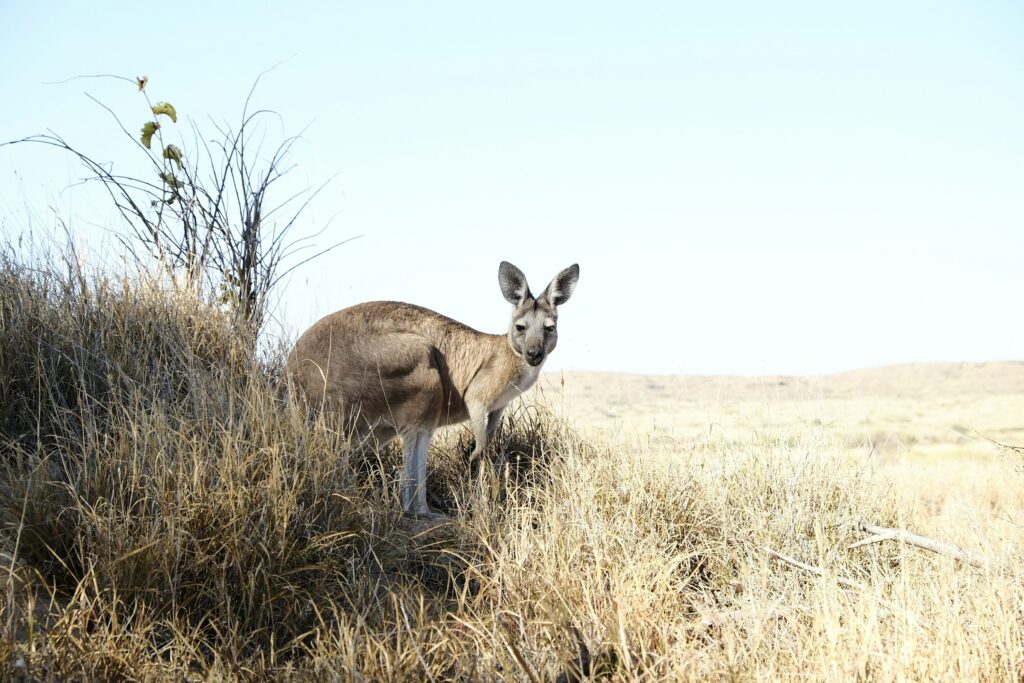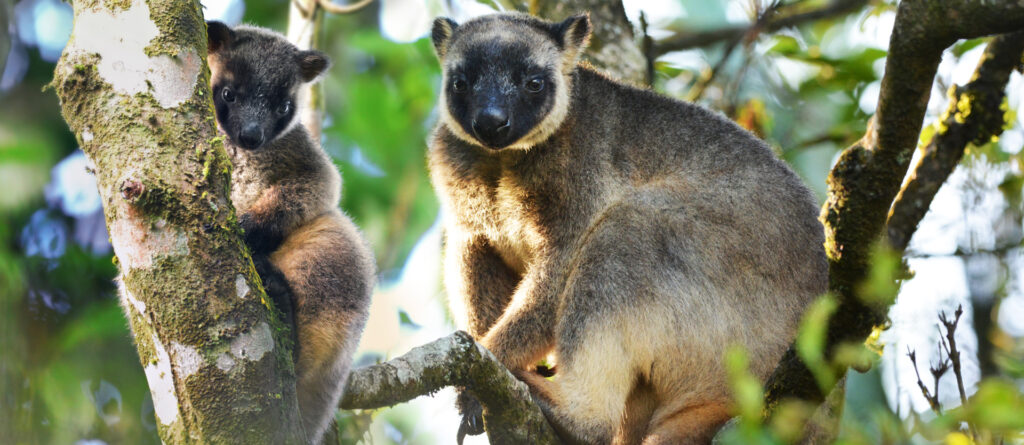Queensland, Australia, is one of the most vibrant and diverse regions in the world when it comes to wildlife and natural beauty. From lush rainforests to sun-kissed beaches, arid outback landscapes, and teeming wetlands, Queensland offers an unrivaled array of habitats that support a rich variety of flora and fauna. For wildlife photographers, this state is a paradise, providing countless opportunities to capture iconic species in their natural environment. Whether you’re looking for unique birdlife, rare mammals, or underwater ecosystems, Queensland has it all.

Exploring the Daintree Rainforest
The Daintree Rainforest, one of the oldest rainforests in the world, is a must-visit for wildlife photographers. Located in Tropical North Queensland, this UNESCO World Heritage-listed site is home to an incredible array of wildlife, many of which cannot be found anywhere else on the planet. Photographers here can expect to encounter species such as the elusive cassowary, a large flightless bird that resembles a living dinosaur, as well as tree-kangaroos, Boyd’s forest dragon, and an array of brilliantly colored butterflies.
The Daintree is also home to the infamous saltwater crocodile, especially along the riverbanks. While photographing these formidable predators requires caution, the dramatic landscapes, from mangrove-lined rivers to dense canopies, provide perfect backdrops for these encounters. Early morning or late afternoon light can add magical elements to shots taken in this deeply shaded rainforest.
The Wetlands of the Atherton Tablelands
A short drive from Cairns, the Atherton Tablelands offer a completely different habitat, filled with wetlands and volcanic crater lakes that attract a multitude of bird species. For bird photographers, the Atherton Tablelands is a treasure trove, with species like the sarus crane, brolga, and various parrots gracing the skies. The Mareeba Wetlands, in particular, is a sanctuary for birdlife and a prime spot for capturing shots of native waterfowl, finches, and raptors.
The lush landscape here is complemented by the presence of wallabies, possums, and pademelons, which can often be spotted in the open areas during the quieter parts of the day. When planning your photography trip, make sure to bring a zoom lens to capture distant wildlife without disturbing them, as the peace of this environment is what draws these animals out.
Lamington National Park: A Haven for Birdwatchers
For wildlife photographers interested in Australia’s birdlife, Lamington National Park is one of the best destinations. Nestled in the Gold Coast hinterland, this national park is renowned for its remarkable biodiversity. The area is a haven for birdwatchers and photographers alike, with over 200 bird species calling the park home. The resplendent colors of species like the Australian king parrot, rainbow lorikeet, and the rare Albert’s lyrebird make for stunning subjects against the lush greenery of the rainforest.
Walking trails in Lamington provide ample opportunities for close encounters with wildlife, as many of the birds are accustomed to human presence. Additionally, the park is home to reptiles like the bearded dragon, and mammals such as red-necked pademelons, which often venture out at dawn and dusk.
Cape York Peninsula: Remote and Rugged Adventure
The Cape York Peninsula is one of the most remote and least explored regions of Queensland, offering a more rugged and adventurous experience for wildlife photographers. This vast area of tropical savannas, eucalyptus woodlands, and coastal wetlands is home to a variety of unique wildlife, including wild brumbies, dingoes, and various species of reptiles.
Cape York is also known for its birdlife, with species like the palm cockatoo, the great-billed heron, and the endangered golden-shouldered parrot frequently spotted in the area. The coastal regions provide photographers with the chance to capture sea turtles, dugongs, and crocodiles, especially in the wet season. Due to its isolation, Cape York requires a fair bit of preparation, but the photographic rewards are unparalleled, offering an experience of Australia’s wildlife that few other places can match.
The Great Barrier Reef: Underwater Photography Paradise
No discussion of Queensland wildlife photography would be complete without mentioning the Great Barrier Reef, one of the natural wonders of the world and a UNESCO World Heritage site. For underwater photographers, the Great Barrier Reef offers an unmatched opportunity to capture the vibrant marine life that thrives in this ecosystem.
From swimming alongside sea turtles, reef sharks, and manta rays to photographing the kaleidoscope of colorful coral and fish species, the reef is a dream for any wildlife photographer. Snorkeling and diving trips to various reef locations, such as the Low Isles, the Whitsundays, or Lady Elliot Island, provide abundant opportunities to explore and capture underwater scenes. To make the most of your time photographing the reef, it’s essential to have waterproof camera gear and understand the behavior of marine animals to anticipate their movements.
Fraser Island: Wildlife and Coastal Photography
Fraser Island, the largest sand island in the world, is another top spot for wildlife photographers. The island’s stunning beaches, crystal-clear lakes, and dense rainforests are home to a variety of wildlife. Fraser Island is famous for its population of dingoes, one of Australia’s most iconic wild animals, which roam the island freely. Capturing a dingo in its natural habitat, particularly against the backdrop of Fraser Island’s unique landscapes, is a highlight for many photographers.
The island’s freshwater lakes, such as Lake McKenzie, attract bird species like egrets, herons, and ospreys, while the surrounding ocean is home to dolphins, whales (during the migration season), and turtles. Whether you’re exploring the beaches, dunes, or forests, Fraser Island offers countless opportunities to photograph wildlife in a variety of stunning settings.

Eungella National Park: Spotting the Elusive Platypus
For those looking to photograph one of Australia’s most unique and elusive creatures, Eungella National Park in the Mackay region is the place to go. This park is one of the best spots in the country to see the platypus in the wild. These shy creatures are best observed at dawn or dusk, when they are most active.
The Broken River area in Eungella is particularly known for regular sightings of the platypus, making it a hotspot for wildlife photographers hoping to capture these fascinating animals in their natural environment. In addition to the platypus, the park is home to a wide range of other wildlife, including brushtail possums, sugar gliders, and various bird species, ensuring that your camera will always be in use.
Outback Queensland: Unique Desert Wildlife
The vast, open spaces of Outback Queensland offer a completely different kind of wildlife photography experience. This arid and semi-arid region is home to unique desert-dwelling species, such as kangaroos, emus, and spinifex pigeons. The red sands and dramatic landscapes of the outback provide a perfect contrast for wildlife photography, where animals appear as silhouettes against the expansive horizons and open skies.
In particular, regions like Winton and Longreach are known for their opportunities to photograph large mobs of kangaroos in the wild, as well as the occasional wedge-tailed eagle soaring overhead. Outback photography often involves longer distances and the need for patience, as animals in these regions are typically more spread out. However, the rewards of capturing wildlife in these unique and iconic Australian settings are well worth the effort.
